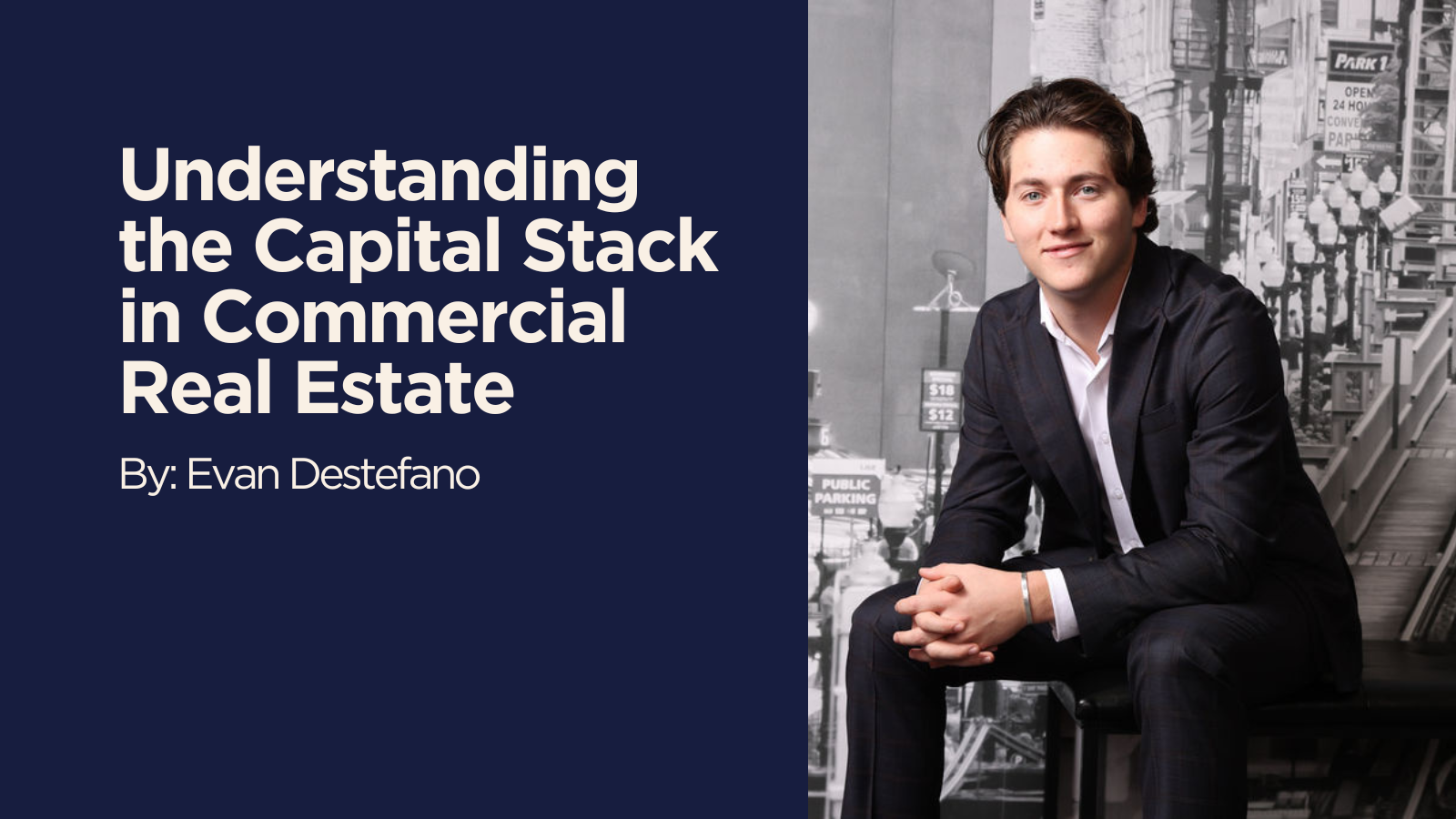04.25.24
Understanding the Capital Stack in Commercial Real Estate

As commercial real estate brokers, having a thorough understanding of the capital stack is essential to understanding how the deals we work on come together. In turn, it is a fundamental concept that directly impacts your ability to advise clients effectively. This may be somewhat elementary to many individuals out there, but I’ve noticed that a lot of young brokers have never learned what the capital stack is, the different financing sources that make up each layer, and the return expectations associated with each layer of funding.
The capital stack simply refers to the layered structure of different financing solutions that are used to make real estate investments. The simplest way to visualize this is with a common bar graph that anyone could find after a quick Google search. Each layer of the stack represents a different form of capital, the risk associated with the investment and the expected returns. We know that lower risk tends to be rewarded with lower returns. Because of this, the base of the stack that typically makes up the majority of the cost to purchase a property is called Senior Debt.
Senior Debt: This is the lowest risk portion of the stack and typically comes from banks or institutional lenders. Most of us brokers are quite familiar with this layer. Lenders could make up anywhere from 50%-80% of the purchase price of the property; they expect regular payments with interest over a specified period, and their collateral is the property itself. The risk level is low, and they have 1st repayment priority.
Mezzanine Debt: Frequently referred to as Mezz debt, this is positioned right above senior debt. This type of financing is used to bridge the gap between your senior debt and equity. If you are unable to achieve a desired loan-to-value from a bank, Mezz lenders may be able to help out and give you that extra boost; however, by taking on more risk they require higher returns. Mezzanine Debt is also secured by interest in the property. Their repayment priority is positioned right after Senior Debt.
Preferred Equity: Preferred Equity is positioned above all forms of debt but below the common equity portion. Unlike debt, preferred equity represents ownership; they have a stake in the success of a property. The goal is similar to Mezzanine debt in the sense that it is used to bridge the gap between senior debt and common equity; however, it is secured by interest in the property’s ownership entity instead of the property itself. Essentially, the preferred equity investor can force a sale of the property if need be. This type of investment has more risk associated with it and requires a higher rate of return than debt. They are rewarded by dividend payments that have priority over distributions to the common equity holders and the opportunity to participate in the upside of the project.
Common Equity: Common equity sits at the top of the capital stack. These funds are put together by the investors who intend to operate the property and take care of the investment on a day-to-day basis. These are the people with the most skin in the game. Common equity can be made up of one individual or multiple investment parties, all of which share the most potential returns as well as the riskiest position. Common equity, being at the top of the capital stack, holds the last priority for repayment. Cash flow will be used to pay off any amounts owed to the capital positions below the common equity, but once that is done there is no cap to the upside that can be made in this position. There is a chance that the common equity sees less or none of their returns if the property performs poorly, but in the event of a disposition or a liquidity event, there is an opportunity for the largest upside.
As brokers, it’s important that we all have a thorough understanding of the capital stack in order to best advise our clients. Whether you work on the investment sales or debt side of the business, our roles extend beyond just bringing buyers and sellers together. Our job is to strategically advise our clients towards successful investments. Understanding the capital stack is important for our ability to evaluate the risk associated with a deal, as well as assisting in the optimal structuring of that deal. Working in the mid-market, many deals may be very straightforward with just senior debt and common equity, but if you are armed with this knowledge, you may be able to find creative solutions to help your clients reach their goals.
